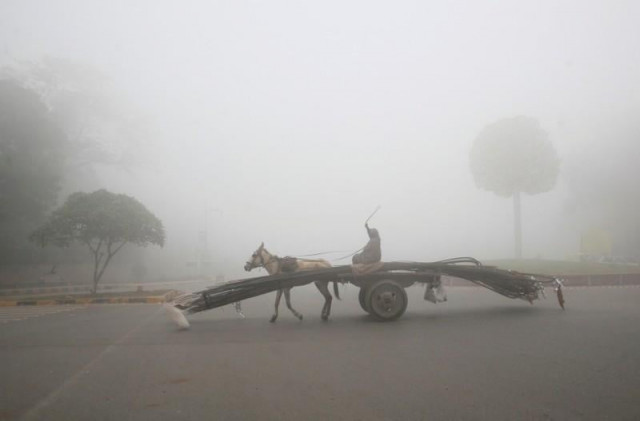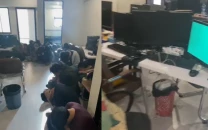Punjab's smog crisis continues to trend
In the absence of timely goal-oriented planning by the government, falling air quality levels have ruined the global r

In older times, concerned parents would often avoid bringing their children into close contact with a smoking relative, in order to safeguard their little ones from the perilous health repercussions of exposure to secondhand smoke during the initial stages of development. Yet no one would have imagined that there would once come a time when breathing in the city's air alone would be equivalent to smoking 5.2 cigarettes a day.
Like last year, in 2024 too, smog continued to silently puncture the stifled respiratory organs of nearly 14 million people in Lahore, where rising air pollution levels earned the city a notorious place among the top most polluted cities in the world. In Punjab, smog started showing its effects at the beginning of winter and by the end of the year, the Air Quality Index (AQI) crossed the 1,000 mark in various cities of the country including the provincial capital. On the morning of November 2nd, Lahore's AQI was recorded at 1,902, which emerged to be its highest ever pollution reading.
Even as the provincial government declared smog a disaster under Section 3 of the Punjab National Climate Act, 1958 whilst imposing a green lockdown, closing educational institutions and placing restrictions on restaurants, environmental advocates like Rafi Alam, opined that the government's actions were a mere show-off.
"If you check the air quality graph for the past three years, it is clear that air pollution is increasing each year. Unless the government takes steps towards a specific goal, better results cannot be expected," implored Alam.
A total of 18,86,586 people have fallen ill in the last one month due to smog, out of which 129,229 patients have gone to hospitals due to respiratory diseases while 6,100,153 have presented with cardiothoracic diseases. Similarly, over 69,399 patients were reported each day with breathing issues, chest pain or stroke arising as a result of smog.
According to experts, the main cause of smog is the smoke emitted from vehicles, factories and other industrial units.
Furthermore, the burning of crop residues and garbage also worsens the air pollution while, as per the claims of the Punjab government, polluted air flowing in from neighbouring rival, India is also a major cause of pollution in Lahore and Multan.
According to the Punjab Sectoral Emission Inventory, 39 per cent of air pollution is caused by transport, 24 per cent by industry, 16 per cent by energy, 11 per cent by agriculture, nine per cent by non-traditional industries and one per cent by other factors.
Dr Zulfikar Ali, a professor at the University of Punjab, revealed that in December, as the winds started to blow, the smog dissipates, but the air pollution remains the same. "Once the fog season begins, harmful substances in the atmosphere start settling down," said Dr Ali.
According to the Emission Inventory of Lahore, during the past five years, for only 28 days out of 2,070 days the AQI was recorded from 0 to 15. From the remaining days, the AQI was 15 to 35, satisfactory for 215 days, 35 to 70, moderate for 564 days, 70 to 140, hazardous to sensitive people for 543 days, 140 to 250, unhealthy for 282 days, 250 to 350 or extremely unhealthy for 134 days while air quality was recorded as dangerous for 27 days.
Speaking to The Express Tribune on the matter, Raja Jahangir Anwar, Secretary of the Environment Protection Agency claimed that for the first time, air pollution and smog are among the top priorities of the government. "We started taking steps in March and April by focusing on five sectors including transport, industry, agriculture, construction and brick kilns. The government allocated Rs101 billion in annual development funds to combat climate change, of which a significant amount of Rs50 billion is only for smog prevention. Similarly, 30 air quality monitors have been installed in Punjab this year, while another 30 monitors will be installed next year," asserted Anwar.
Additional reporting by Muhammad Ilyas


















COMMENTS (1)
Comments are moderated and generally will be posted if they are on-topic and not abusive.
For more information, please see our Comments FAQ